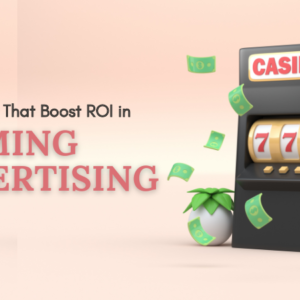If you’ve ever wondered why some matchmaking ads seem to attract the right kind of audience while others fail to connect, the answer often lies in one strategic factor — audience segmentation. In a world where love meets algorithms, understanding who you’re advertising to can make or break your entire campaign.

The Data Behind Better Matches
According to Statista, global online dating revenue is projected to surpass $4 billion by 2027. But here’s the twist — advertisers aren’t just selling memberships or downloads anymore. They’re selling connection, compatibility, and trust. That’s where precise audience segmentation steps in.
For advertisers running online matchmaking ads, targeting everyone is like shouting into a crowded room. Segmentation helps narrow the message, ensuring your ad reaches people most likely to engage, sign up, and eventually find their match through your platform.
When Your Ads Talk to Everyone, They Talk to No One
One of the biggest challenges advertisers face in matchmaking campaigns is audience dilution. Many ad networks cast a wide net, hoping volume will compensate for low engagement. But when your ad targeting is too broad, you end up paying for clicks from users who were never interested in a dating platform in the first place.
For example, imagine showing an ad for a “serious relationship site” to users browsing casual encounter apps. It’s not just a waste of money — it sends the wrong brand message. This mismatch can quickly drain budgets and reduce ad quality scores across platforms.
Why Segmentation Is the Real Matchmaker
Audience segmentation isn’t just a buzzword. It’s an advertising science built on behavior, intent, and psychographics. The best-performing matchmaking campaigns rely on three core segmentation pillars:
Demographic Targeting
Age, gender, and location are the obvious ones. But refined advertisers look deeper — such as income level, relationship status, and interests. A campaign promoting a luxury matchmaking service, for example, performs better when targeting users with higher income brackets or specific lifestyle indicators.
Behavioral Targeting
How users behave online says more about them than their profiles. Are they active on dating forums? Do they engage with romantic content on social media? Have they searched for “best dating apps” recently? These behaviors help craft ads that speak directly to intent.
Psychographic Targeting
This digs into personality traits, attitudes, and values. For instance, a matchmaking site promoting spiritual connections can use segmentation data to find audiences interested in mindfulness or meditation.
Smart segmentation doesn’t just reduce wasted ad spend; it enhances click-through rates and builds genuine trust between users and brands.
Turning Data into Connection
Successful advertisers treat audience data like a compass. Instead of guessing who will click, they analyze, segment, and personalize. It’s not about flooding the web with more matchmaking ads — it’s about reaching the right hearts, not just more of them.
Platforms allow advertisers to target niche audiences based on detailed behavioral and contextual signals. If you’re planning your next campaign, it helps to use a structured approach — a Checklist for Running Profitable Matchmaking Ads that aligns segmentation, creative, and bidding strategies together.
Understanding the Matchmaking Funnel
Matchmaking ads follow a unique funnel compared to other verticals. The journey starts with curiosity (“Could this platform really find my type?”) and moves toward trust (“This feels safe and authentic.”). Segmentation helps tailor messaging for each funnel stage.
- Awareness: Highlight emotional appeal and social proof.
- Consideration: Offer value-driven messages like “Verified Profiles” or “Personality-Based Matching.”
- Conversion: Push personalized CTAs such as “Join Free & Meet Your Type.”
When segmentation is aligned with funnel stages, engagement rates rise significantly — often doubling conversion rates compared to generic campaigns.
How Advertisers Are Using Segmentation Creatively
Let’s look at a few ways smart advertisers are using segmentation to scale matchmaking campaigns:
Localizing Love
Geographic segmentation helps advertisers promote matchmaking sites city-by-city. For example, showing “Find singles in Mumbai” converts better than a generic “Join our dating site.”
Seasonal Segmentation
Valentine’s Day, New Year’s Eve, or the wedding season are perfect hooks. Targeting users who recently searched for gifts or relationship advice during these times can deliver high CTRs.
Device-Based Targeting
Mobile users behave differently than desktop ones. Quick sign-up CTAs like “Swipe to Start” work better on mobile, while “Create a detailed profile” fits desktop audiences.
Ad Creative Personalization
When ads mirror user intent — like using casual imagery for a flirting app or formal tones for a marriage-focused site — users relate faster, and the click feels organic.
Bridging Data and Emotion in Matchmaking Advertising
Advertisers often struggle to balance metrics with human emotion. But matchmaking campaigns aren’t about raw clicks; they’re about relevance. A person seeing your ad is looking for hope, connection, or companionship — not just another site.
That’s why segmentation is both an art and a science. It lets advertisers speak to emotion through data. Instead of “Find your soulmate today,” you might say, “Meet someone who shares your values.” That subtle shift, powered by psychographic insights, often results in better engagement.
Matching Campaign Goals with Ad Networks
Not all ad networks perform equally for matchmaking advertising. Networks that understand user intent — especially within relationship or lifestyle verticals — outperform generic ones.
The best matchmaking campaigns use ad networks that offer:
- Contextual targeting within dating-related categories
- Device and geo-level optimization
- Click fraud protection
- Scalable traffic for diverse audience groups
If you’re exploring ad platforms designed for dating verticals, it’s worth checking how Matchmaking ads perform across contextual and native placements.
Turning Audience Data into a Matchmaking Strategy
Segmentation is only powerful when acted upon. Here’s how advertisers can practically apply segmentation insights to matchmaking campaigns:
- Analyze Past Data: Study which user groups converted the most.
- Split-Test Ad Copy: Run A/B tests across different audience clusters.
- Refine by Engagement: Focus budget on audiences showing stronger CTR and dwell time.
- Retarget Wisely: Use warm audiences — people who visited the landing page but didn’t register.
- Align Creatives with User Intent: Ensure every ad creative feels tailored to the audience persona.
These steps not only sharpen targeting but also improve ROI across your ad spend.
The Future of Matchmaking Campaigns Lies in Micro-Segmentation
In the next few years, matchmaking advertisers will rely more on micro-segmentation — dividing users by lifestyle patterns, interests, and even communication preferences. AI-driven ad platforms already analyze micro-signals like chat frequency, profile completion, and engagement to recommend ads dynamically.
This evolution means advertisers will spend less on generic impressions and more on high-intent clicks. The shift toward “quality over quantity” is already redefining how matchmaking site promotion is measured.
Building Relationships, Not Just Campaigns
At its core, advertising in the matchmaking space is about fostering human connection through smart digital strategies. Audience segmentation gives advertisers the precision to communicate authentically and effectively — ensuring that every impression has emotional resonance and every click has intent.
When segmentation becomes a creative tool, matchmaking campaigns start to look less like marketing — and more like the beginning of a meaningful relationship.
If you’re ready to apply these strategies and create a matchmaking ad campaign that actually connects, now’s the time to start.
Conclusion
Audience segmentation transforms matchmaking ads from generic banners into emotional connectors. By blending demographic precision with psychological understanding, advertisers can attract audiences who genuinely resonate with the platform’s purpose.
The difference between “just another dating ad” and “the ad that converts” often lies in how well you understand your audience. After all, in matchmaking advertising — as in love — the right match makes all the difference.


